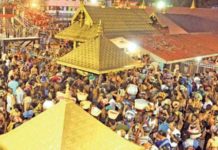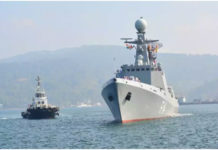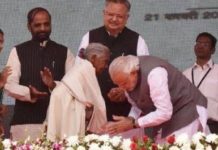Here’s another article written by Iyer on the problems faced in Kosovo. Post in your doubts and opinions.
KOSOVO
HISTORICAL BACKGROUND:
After the partition of Hasburg, Austria-Hungary, which was in accordance with the post World War I Paris Peace conference of 1919, Montenegro and the South Slav provinces of the former Austria-Hungary Empire joined Serbia to form Yugoslavia. However, in the early 1960’s Yugoslavia was renamed the Socialist Federal Republic of Yugoslavia (SFRY) under the command of General Joseph Broz Tito. The SFRY was basically formed of six socialist republics, they were Bosnia an Herzegovina, Croatia, Macedonia, Montenegro, Serbia, and Slovenia, along with two autonomous socialist provinces of which one was Vojvodina and the other was Kosovo (after 1974 these two were largely equal to the other members of the federation). General Tito was capable through his charisma and persona to keep together a rather fragmented federation. However, Tito’s death in 1980 was the beginning of the “re-defragmentation” of the Yugoslav society. Many republics wanted independence but the highest tensions were along the Serbian-Albanian cleavages of Kosovo.
MILOSEVIC’S ERA:
At the beginning, the ethnic Albanians of Kosovo were aiming for the change of the status of Kosovo from a autonomous region to a republic. Slobodan Milosevic, the then President of the Socialist Republic of Serbia, handled the situation with an iron fist. Instead of giving room for deliberations, Milosevic canceled Kosovo’s autonomy and called for a state of emergency in the region.
In 1991, the Yugoslav wars began with the secession of Slovenia and Croatia from the Socialist Federal Republic of Yugoslavia. By the summer of 1992, Yugoslavia was fully absorbed with the wars in Croatia and Bosnia, and had no spare military capacity to deal with conflicts elsewhere, the Kosovans kept their front cool under the peaceful methods of Ibrahim Rugova who was the 1st president of Kosovo, he supported Kosovo’s independence but strongly opposed the use of force as a means of achieving it, fearing a Bosnia-style bloodbath. He instead advocated a policy of Gandhi like – passive resistance. Rugova was to a certain extent approved upon from the majority of Kosovans. However, after the signing of the Dayton Accords (Read: http://news.bbc.co.uk/onthisday/hi/dates/stories/december/14/newsid_2559000/2559699.stm) that settled the disputes in the neighboring states and put an end to the Bosnian war, more militant movements in Kosovo started to shape and gain ground. The crisis escalated in December 1997 at the Peace Implementation Council (http://en.wikipedia.org/wiki/Peace_Implementation_Council. Further reading: Pg 29-35 http://www.iss.europa.eu/uploads/media/OccasionalPaper83.pdf) meeting in Bonn, where the International Community (as defined in the Dayton Agreement) agreed to give the High Representative in Bosnia sweeping powers, including the right to dismiss elected leaders. At the same time, Western diplomats insisted that Kosovo be discussed, and that Serbia and Yugoslavia be responsive to Albanian demands there. The delegation from Serbia stormed out of the meetings in protest.
Gradually, the Kosovo Liberation Army, a guerilla group, started to prevail over Rugova’s pacifist methods propounded by his Democratic league of Kosovo (LDK). The KLA started recruiting many ethnic Albanians and their leaders who were previously banned from politics under Tito’s government. The KLA was recognized neither by Belgrade (Serbian capital) nor by officials in Kosovo. This process of ignoring the KLA helped them become more attractive to the public since they provided alternative political strategies in times of deep economic depression.
The KLA became more militant by the minute gaining ammunition, uniforms, and rifles from Albania. The KLA targeted all symbols of the Serbian government within their territories. The secret police of Milosevic started trying to track down the militants through secret intelligence at first and then through military intervention, this led to the 1st phase of the Kosovo War. Both the sides were on the offensive, Serbian armed forces indiscriminately attacked on Kosovo Albanian villages. Police and military forces partially or completely had destroyed thousands of Albanian villages in Kosovo by burning or shelling. Identity Cleansing was a strategy that was employed by the government of Serbia during the Kosovo War. Identity cleansing is defined as “confiscation of personal identification, passports, and other such documents to make it difficult or impossible for those driven out to return”. KLA on the other hand has also been accused off killing hundreds of ethnic Serbs, Lapušnik prison camp was an alleged detention camp of KLA where 112 Serbian civilians were allegedly killed, more than 200 are still missing. However, the international community started to show some Luke-warm interest in the conflict. During deliberations with Milosevic, he approved allowing 2,000 OSCE (Organisation for Security and Cooperation in Europe) unarmed personnel into Kosovo. Those forces barely changed the scene of the conflict. Thus, the international community started looking for more efficient ways to end the conflict in the Balkan.
After the death of 41 Kosovo Albanians in 1999 during the Račak massacre, the Contact Group, which was composed of the U.S., Britain, France, Germany, Italy, and Russia, brought together at the same table, the Serbian and the Kosovo Albanian sides, in Rambouillet, France. The talks where coordinated by Madeleine Albright and Richard Holbrooke.
The Rambouillet talks concluded to self-governance of Kosovo and the immediate ceasefire to the offensive. The delegates that were present at those talks were the Kosovo Liberation Army Leader, Hashim Thaci, instead of Rugova, and Slobodan Milosevic. Thaci did sign the agreement however the Parliament in Belgrade rejected the Rambouillet agreement since one of its articles called for the secession of Kosovo. As a matter of fact, the agreement was drafted in such a way that was supposed to be degrading to the Serbian sovereignty in order to meet its designed fate of rejection. With that rejection came the call to action where Serbs sent more troops into Kosovo. Many have claimed that with this insurgency in the number of troops, ethnic cleansing and genocide was taking place in the province.
With the insurgency, ethnic cleansing, and failed peace talks, the NATO decided to take military action.
THE NATO ERA:
Operation Allied Force (2nd phase of the Kosovo war) was a NATO (Do you know who the Head of NATO is? Where is its Headquarters?) air campaign launched in March 1999. NATO justified its campaign by calling its intervention a “humanitarian intervention” in order to end human rights violations and ethnic cleansing. However, the Security Council or the United Nations’ General Assembly did not approve that operation.
The operations stated targets were all the Serbian air and military forces, command centers and petroleum storage facilities. Basically, the NATO wanted to degrade Milosevic of all his military strength in order to surrender.
The operation continued for almost eighty continuous days of shelling the Serbian cities. NATO said that it would stop its operation only when the Serbian troops withdraw from Kosovo. Apart from their air strike campaigns, NATO forces ran some humanitarian assistance campaigns to refugees through delivering sanitary water and food supply.
On June 3rd 1999, Milosevic simply could not continue the battle anymore. His forces were exhausted by every mean. He agreed to the withdrawal scheme previously suggested which noted the entry of an international force into Kosovo. Thus, Kosovo, under the UNSC Resolution 1244, was put under “temporary United Nations administration”. Moreover, the resolution did call for the demilitarization of the KLA, return of the refugees, and UN wide scope of facilitating the political process to identify the future status of Kosovo.
UN ADMISTRATION ERA:
After the UN administration phase that ran from 1999-2006, international negotiations resumed to settle on a final status of Kosovo which was in line with UNSC Resolution np. 1244. The talks, led by UN Special Envoy Martti Ahtisaari (He won the Nobel Peace Prize in which year?), began in February 2006 but failed to read a concise settlement approved by both. In February 2007, Ahtisaari delivered a draft status settlement proposal to leaders in Belgrade and Pristina, the basis for a draft UN Security Council Resolution which proposes ‘supervised independence’ for the province. A draft resolution, backed by the United States, the United Kingdom and other European members of the Security Council, was incapable of accommodating the Russian refusal to undermine any state’s sovereignty. However, international diplomacy pioneers have predicted that an independence of the region would sooner or later prevail.
After many weeks of failed discussions between the US, European Powers and Russia, it was evident that the former two powers were more likely to recognize the independence of Kosovo even if a UN resolution did not sponsor it. However, they advised that the Kosova declaration of independence be postponed until after the Serbian elections in the fear that the outcome of the elections would be in favor of more nationalistically radical candidates.
On February 17th, 2008 Kosovo’s Assembly declared its independence. As expected, the United States, France and the United Kingdom announced their recognition while Russia did not. Today, sixty nine members of the international community recognize Kosovo as an independent state. However, it has not been admitted into the United Nations due to the Russian veto.
As of 9 October 2008, all of Kosovo’s immediate neighbor states except Serbia had recognized the declaration of independence. Montenegro and Macedonia announced their recognition of Kosovo on 9 October 2008. Albania, Croatia, Bulgaria and Hungary have also recognized the independence of Kosovo.
The UN General Assembly requested from the International Court of Justice to provide an advisory opinion on the legality of Kosovo’s declaration of independence from Serbia. The advisory opinion is typically not binding, however it does carry some scholarly value was issued on the 22nd of July 2010 stating that Kosovo’s declaration of independence was not in violation of international law.
CG.















“During deliberations with Milosevic, he approved allowing 2,000 OSCE (Organisation for Security and Cooperation in Europe) unarmed personnel into Kosovo”
*Who is ‘he’ here? You meant the international community right?
First of all I must thank you for a very well written comprehensive article. I must share some interesting contrasts of the Kosovo situation with J&K that I discern from the official positions that the Indian and Pakistani govts hold regarding Kosovo’s independence (source Wiki):
*PAKISTAN
“We understand and support the legitimate aspirations of the Kosovars and the need for peace in Kosovo and the region. ”
“Pakistan is conducting intensive talks with its neighbours and other members of the Organisation of the Islamic Conference on the issue, and that it is just a matter of time before Pakistan takes the decision to recognise Kosovo.”
——-
*INDIA
“It has been India’s consistent position that the sovereignty and territorial integrity of all countries should be fully respected by all states. We have believed that the Kosovo issue should have been resolved through peaceful means and through consultation and dialogue between the concerned parties.”
“India abides by the principles of international law and does not recognize Kosovo’s secession””
“India will support Serbia on the issue of protection of her sovereignty in all international forums”
——-
Predictable stands, aren’t they?
India needs to tell Russia that its still with them. And if it means putting the aspirations of an inconsequential European nation on “hold”, so be it,.
However, Pakistan is in the American bloc, the only bloc. Like KSA, it doesn’t have qualms in recognizing it.
Interesting read, in light of Aymen’s comment –
http://www.dnaindia.com/opinion/column_china-s-proxies-pak-and-n-korea-are-bamboozling-us_1474172